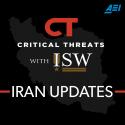Iran Update, April 4, 2023
Apr 4, 2023 - ISW Press
Supreme Leader Ali Khamenei reaffirmed his commitment to enforcing the mandatory hijab law during a meeting with senior regime officials on April 4. Khamenei framed the law as both a political and religious requirement. He added that the hijab issue “will definitely be solved,” but did not specify how exactly regime officials should go about enforcing mandatory veiling. It is noteworthy that Khamenei provided no specific guidance on how to enforce the hijab law given that regime officials have articulated different theories on how to do so in recent days. Khamenei’s explicit endorsement of mandatory veiling on April 4 differs from his vague reference to this issue in his Nowrouz address on March 21. Khamenei previously implied that the economy should be the primary topic of intra-regime debate in his Nowrouz address, as CTP previously reported, implying that socio-cultural issues, such as the hijab requirement, are not up for discussion. Khamenei contrastingly stated on April 4 that “choosing an economic slogan does not mean disregarding social and cultural issues.” Khamenei may have made this clarification to explain to regime officials that they can discuss the hijab—in addition to the economy—so long as their discussions about veiling are in the context of enforcing the hijab law.








